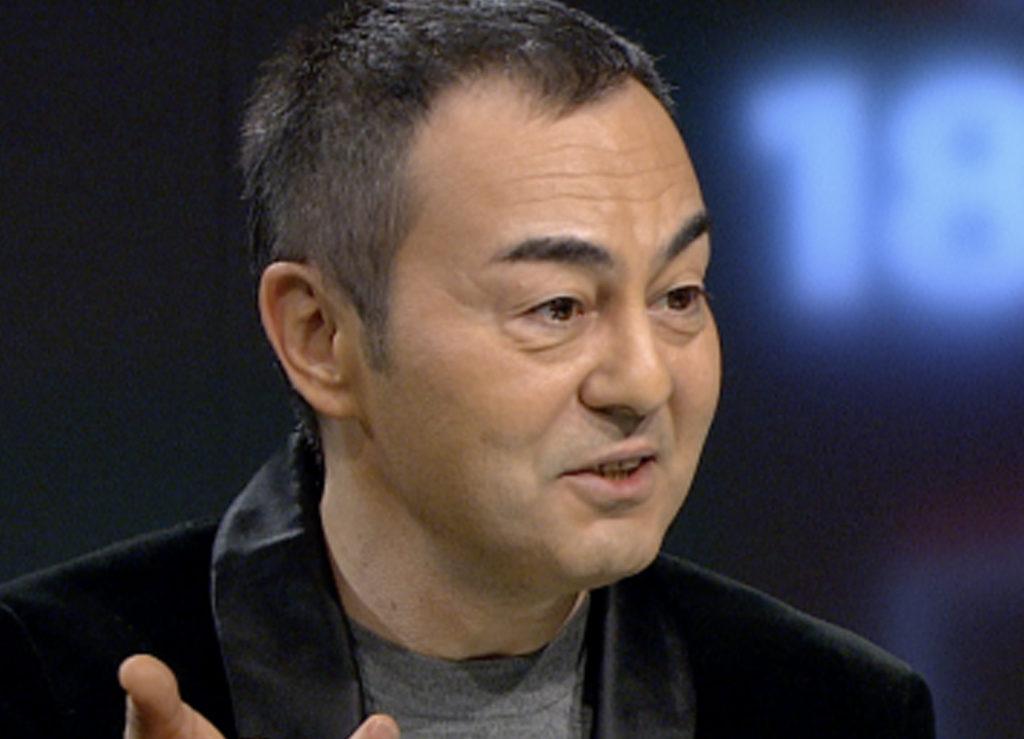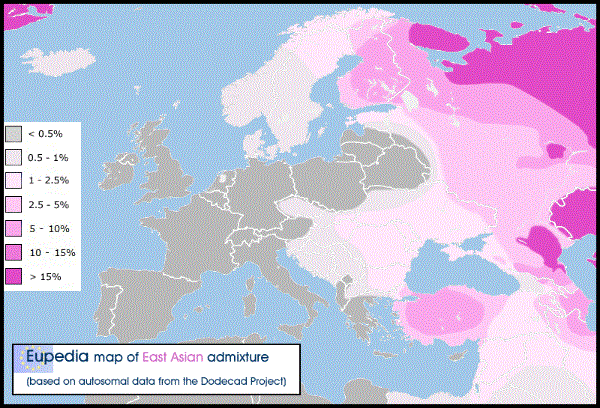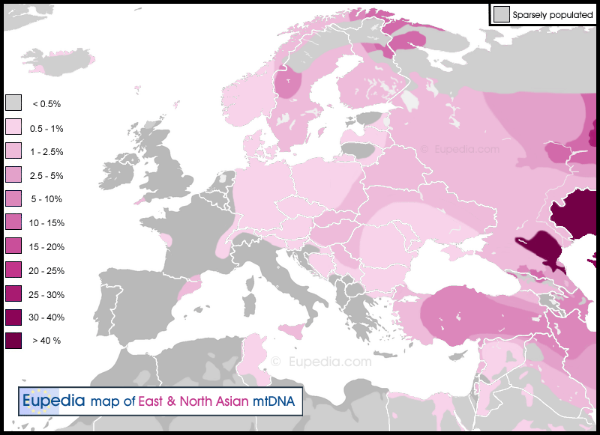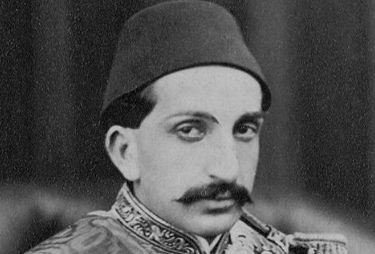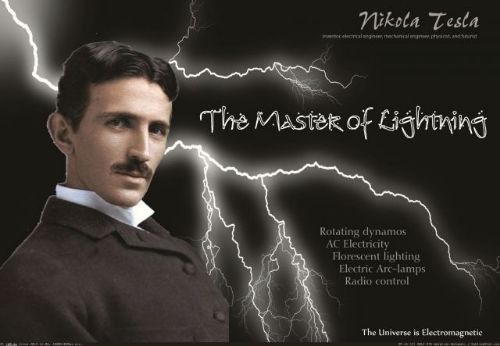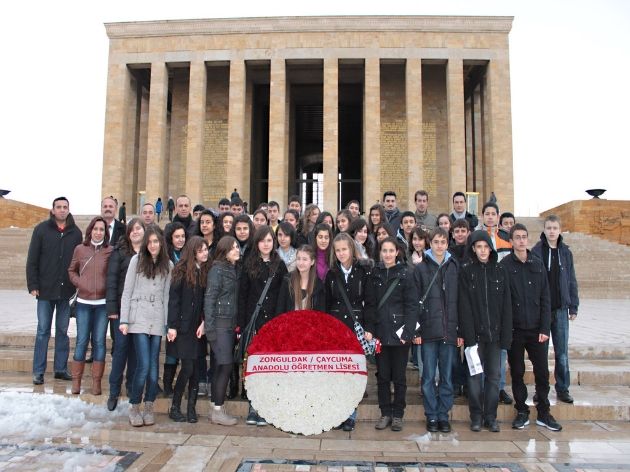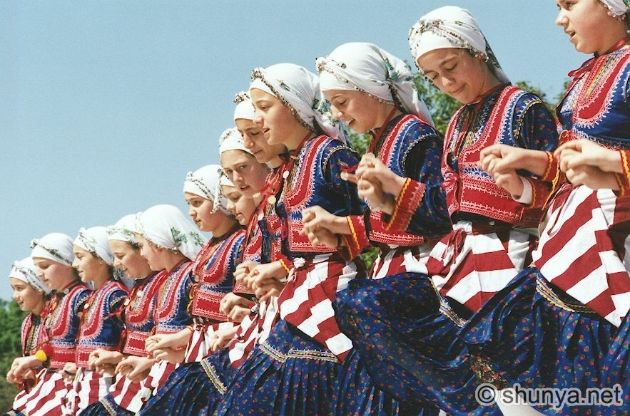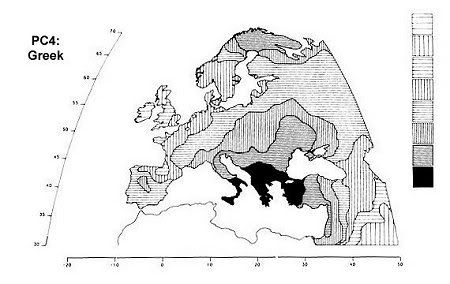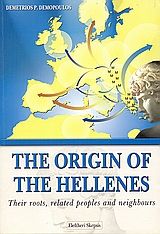Post by Admin on Nov 9, 2022 21:16:26 GMT
Bouzouki is the ancient Greek Pandura
Bouzouki

Bouzouki in the Museum of Greek Folk Musical Instruments in Athens
The Greek bouzouki is a plucked musical instrument of the lute family, called the thabouras or tambouras family. The tambouras has existed in ancient Greece as pandoura, and can be found in various sizes, shapes, depths of body, lengths of neck and number of strings. The bouzouki and the baglamas are the direct descendants. The Greek marble relief, known as the Mantineia Base (now exhibited at the National Archaeological Museum of Athens), dating from 330–320 BC, shows a muse playing a variant of the pandoura.[7][8]
From Byzantine times it was called pandura and then tambouras.[9] On display in the National Historical Museum of Greece is the tambouras of a hero of the Greek revolution of 1821, General Makriyiannis.
Other sizes have appeared and include the Greek instrument tzouras, an instrument smaller in size than standard bouzouki.
The bouzouki arrived in Greece following the 1919–1922 war in Asia Minor and the subsequent exchange of populations between Greece and Turkey when the ethnic Greeks fled to Greece.
The Irish bouzouki, with four courses, a flatter back, and differently tuned from the Greek bouzouki, is a more recent development, stemming from the introduction of the Greek instrument into Irish music by Johnny Moynihan around 1965, and its subsequent adoption by Andy Irvine, Alec Finn, Dónal Lunny, and many others.[12]
en.wikipedia.org/wiki/Bouzouki#History
Irish bouzouki
The Irish bouzouki (Irish: búsúcaí) is an adaptation of the Greek bouzouki (Greek: μπουζούκι).
en.wikipedia.org/wiki/Irish_bouzouki
Pandura

The pandura (Ancient Greek: πανδοῦρα, pandoura) or pandore, an ancient string instrument, belonged in the broad class of the lute and guitar instruments. Akkadians played similar instruments from the 3rd millennium BC. Ancient Greek artwork depicts such lutes from the 3rd or 4th century BC onward.[1]
Ancient Greece
The ancient Greek pandoura was a medium or long-necked lute with a small resonating chamber, used by the ancient Greeks.
Its descendants still survive as the Greek tambouras and bouzouki,[2][3]
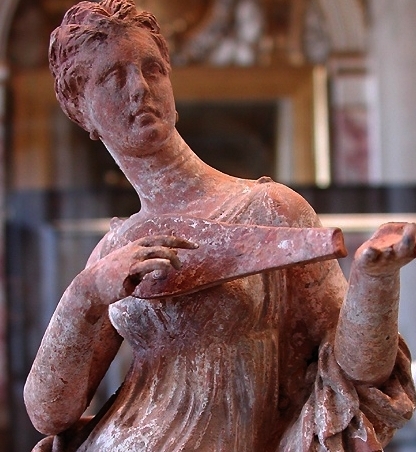
Pandoura Ancient Greek Tanagra figurine, 200 BC.
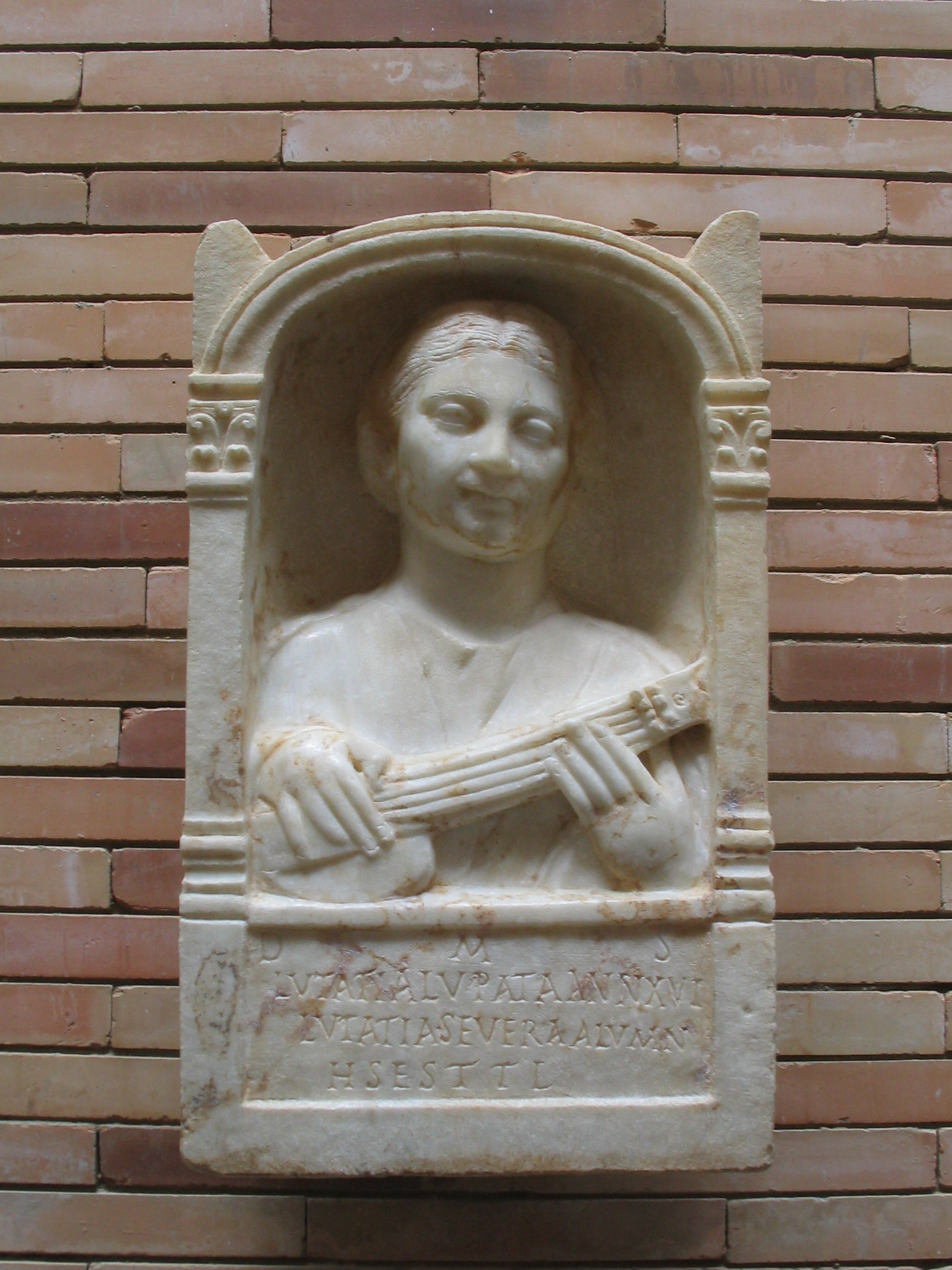
Memorial stele for a 16-year-old Roman woman, depicted playing a pandura-type instrument, date estimated 2nd century A.D. Unearthed in 1956 at the archeological site Emerita Augusta in Spain. Kept at the Museo Nacional de Arte Romano in Mérida, Spain.[8][9][10]
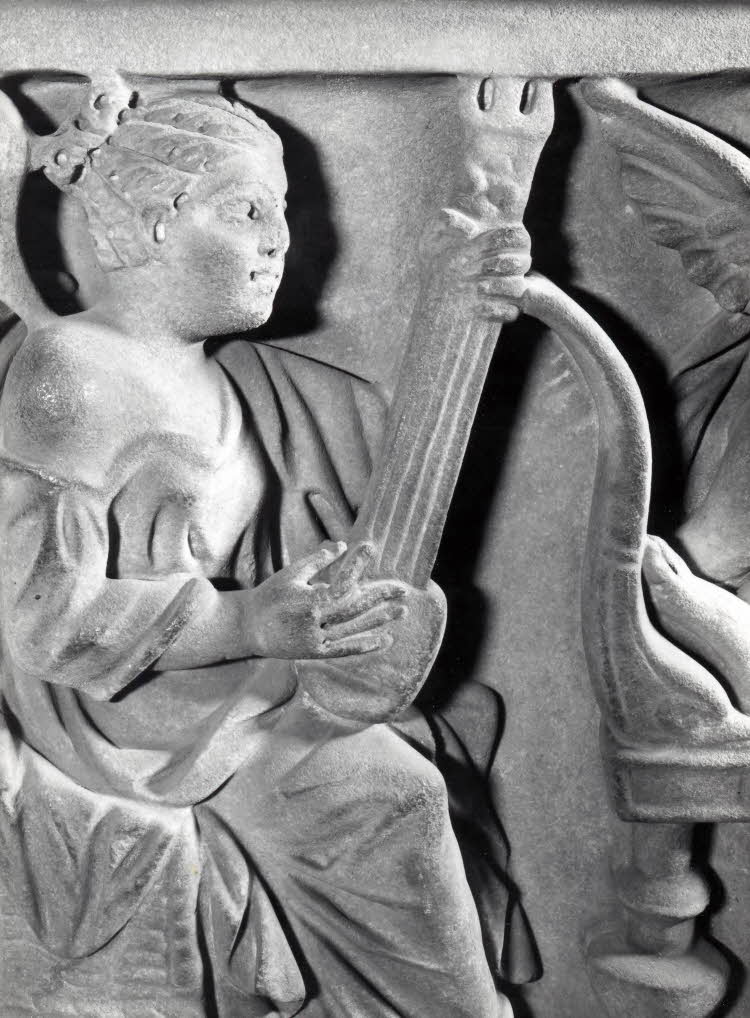
Pandura-type instrument depicted on a Roman sarcophagus dated 3rd century AD.[11]

Roman or Byzantine pandoura from a 6th-century A.D. mosaic in Constantinople. Henry George Farmer named it a 3-string pandoura.[12]
en.wikipedia.org/wiki/Pandura
Bouzouki came from Tambouras and Tambouras came from Pandura.
Rebetiko
Rebetiko
The musical roots of rebetiko date back to Byzantine ecclesiastical music and folk song of Asia Minor and of the Aegean islands.
Ρεμπέτικο
Οι μουσικές ρίζες του ρεμπέτικου ανάγονται στην Βυζαντινή εκκλησιαστική μουσική και στο δημοτικο τραγούδι της Μικράς Ασίας και των νησιών του Αίγαίου.
analogion.com/forum/index.php?threads/%CE%A1%CE%B5%CE%BC%CF%80%CE%AD%CF%84%CE%B9%CE%BA%C E%BF-%CE%BA%CE%B1%CE%B9-%CE%92%CF%85%CE%B6%CE%B1%CE%BD%CF%84%CE%B9%CE%BD%C E%AE-%CE%9C%CE%BF%CF%85%CF%83%CE%B9%CE%BA%CE%AE.20647/
All Rebetikο music is based on these scales of Re of the ancient Greek Dorian way.
Όλη η ρεμπέτικη μουσική στηρίζεται σε αυτές τις κλίμακες της Ρε του αρχαίου ελληνικού Δωρικού τρόπου.
rebetikoback.blogspot.com/2014/01/blog-post.html
The Rebetiko song is the Greek urban song in its beginning. It evolved through Greek music tradition, folk song and kleftiko by the inhabitants of Greek cities.
Το ρεμπέτικο τραγούδι είναι το ελληνικό αστικό τραγούδι στη απαρχή του. Εξελίχθηκε μέσα από την ελληνική μουσική παράδοση, του δημοτικού τραγουδιού και των κλέφτικων από τους κατοίκους των ελληνικών πόλεων.
el.wikipedia.org/wiki/%CE%A1%CE%B5%CE%BC%CF%80%CE%AD%CF%84%CE%B9%CE%BA%C E%B1
Rebetiko is also recognized as Greek music by UNESCO.
ich.unesco.org/en/RL/rebetiko-01291
Popular Laic music from Greece
Greek Laic music
Laic song (folk / traditional song) is called that Greek song, given in Greek language, that is harmonized with the style of Greek urban folk music, both from antiquity and later, after the end of the 1950s, when a a new generation of musicians developed from Rebetiko song to Laic music of the time. [1]
In modern times, Laic song has evolved from Demotic with all its folk traditions and from rebetiko.
In Smyrna, Constantinople and the other great ports of the empire, Hellenism lives and creates, drawing its tradition from the cultivation of the spirit of world culture. In this powerful and ancient historical tree will come to bloom around the 17th century the modern Laic song of the cities. In Greece in the 1960s, a number of different schools emerged. A music stream of Mediterranean origin (or influence) greatly influenced Laic song, with intense dance music,
So we have, on the one hand, a homogenized Greek Laic song, with all the idioms of Greek traditional culture, and on the other we have the peculiar musical stream of urban Rebetiko (song of cities), created by the Greek tradition, mainly of the Greeks refugees.
Λαϊκό τραγούδι (λαϊκό/παραδοσιακό τραγούδι) ονομάζεται εκείνο το τραγούδι των Ελλήνων, δοσμένο σε ελληνική γλώσσα, που είναι εναρμονισμένο στο ύφος της ελληνικής αστικής λαϊκής μουσικής, τόσο από την αρχαιότητα, όσο και μεταγενέστερα, μετά το τέλος της δεκαετίας του 1950, όταν μια νέα γενιά μουσικών αναπτύχθηκε από το ρεμπέτικο τραγούδι, στη λαϊκή μουσική της εποχής.[1]
Στη σημερινή εποχή το λαϊκό τραγούδι εξελίχθηκε από το δημοτικό με όλες του τις λαϊκές παραδόσεις και το ρεμπέτικο
Στη Σμύρνη, την Πόλη και τα άλλα μεγάλα λιμάνια της αυτοκρατορίας ο Ελληνισμός ζει και δημιουργεί, αντλώντας κάθε παράδοσή του από την καλλιέργεια του πνεύματος του παγκόσμιου πολιτισμού. Σε αυτό το ισχυρό και πανάρχαιο ιστορικό δέντρο θα έρθει να ανθίσει περί τον 17ο αι. το σύγχρονο λαϊκό τραγούδι των πόλεων. Στην Ελλάδα της δεκαετίας του 1960, μια σειρά από διαφορετικά σχολεία προέκυψαν. Ένα μουσικό ρεύμα μεσογειακής καταγωγής (ή επιρροής) επηρέασε σημαντικά το λαϊκό τραγούδι, με έντονη χορευτική μουσική,
Έχουμε λοιπόν, από τη μια το κοινό, ομογενοποιημένο ελληνικό λαϊκό τραγούδι, με όλα τα ιδιώματα της ελληνικής παραδοσιακής κουλτούρας κι από την άλλη το ιδιόμορφο μουσικό ρεύμα του αστικού ρεμπέτικου (τραγουδιού των πόλεων), δημιουργημένο από την ελληνική παράδοση, κυρίως των Ελλήνων προσφύγων.
el.wikipedia.org/wiki/%CE%9B%CE%B1%CF%8A%CE%BA%CF%8C_%CF%84%CF%81%CE%B1% CE%B3%CE%BF%CF% %CE%B4%CE%B9
%CE%B4%CE%B9
More Greek Laic music played with Bouzouki(neo-Pandura)
Bouzouki

Bouzouki in the Museum of Greek Folk Musical Instruments in Athens
The Greek bouzouki is a plucked musical instrument of the lute family, called the thabouras or tambouras family. The tambouras has existed in ancient Greece as pandoura, and can be found in various sizes, shapes, depths of body, lengths of neck and number of strings. The bouzouki and the baglamas are the direct descendants. The Greek marble relief, known as the Mantineia Base (now exhibited at the National Archaeological Museum of Athens), dating from 330–320 BC, shows a muse playing a variant of the pandoura.[7][8]
From Byzantine times it was called pandura and then tambouras.[9] On display in the National Historical Museum of Greece is the tambouras of a hero of the Greek revolution of 1821, General Makriyiannis.
Other sizes have appeared and include the Greek instrument tzouras, an instrument smaller in size than standard bouzouki.
The bouzouki arrived in Greece following the 1919–1922 war in Asia Minor and the subsequent exchange of populations between Greece and Turkey when the ethnic Greeks fled to Greece.
The Irish bouzouki, with four courses, a flatter back, and differently tuned from the Greek bouzouki, is a more recent development, stemming from the introduction of the Greek instrument into Irish music by Johnny Moynihan around 1965, and its subsequent adoption by Andy Irvine, Alec Finn, Dónal Lunny, and many others.[12]
en.wikipedia.org/wiki/Bouzouki#History
Irish bouzouki
The Irish bouzouki (Irish: búsúcaí) is an adaptation of the Greek bouzouki (Greek: μπουζούκι).
en.wikipedia.org/wiki/Irish_bouzouki
Pandura

The pandura (Ancient Greek: πανδοῦρα, pandoura) or pandore, an ancient string instrument, belonged in the broad class of the lute and guitar instruments. Akkadians played similar instruments from the 3rd millennium BC. Ancient Greek artwork depicts such lutes from the 3rd or 4th century BC onward.[1]
Ancient Greece
The ancient Greek pandoura was a medium or long-necked lute with a small resonating chamber, used by the ancient Greeks.
Its descendants still survive as the Greek tambouras and bouzouki,[2][3]

Pandoura Ancient Greek Tanagra figurine, 200 BC.

Memorial stele for a 16-year-old Roman woman, depicted playing a pandura-type instrument, date estimated 2nd century A.D. Unearthed in 1956 at the archeological site Emerita Augusta in Spain. Kept at the Museo Nacional de Arte Romano in Mérida, Spain.[8][9][10]

Pandura-type instrument depicted on a Roman sarcophagus dated 3rd century AD.[11]

Roman or Byzantine pandoura from a 6th-century A.D. mosaic in Constantinople. Henry George Farmer named it a 3-string pandoura.[12]
en.wikipedia.org/wiki/Pandura
Bouzouki came from Tambouras and Tambouras came from Pandura.
Rebetiko
Rebetiko
The musical roots of rebetiko date back to Byzantine ecclesiastical music and folk song of Asia Minor and of the Aegean islands.
Ρεμπέτικο
Οι μουσικές ρίζες του ρεμπέτικου ανάγονται στην Βυζαντινή εκκλησιαστική μουσική και στο δημοτικο τραγούδι της Μικράς Ασίας και των νησιών του Αίγαίου.
analogion.com/forum/index.php?threads/%CE%A1%CE%B5%CE%BC%CF%80%CE%AD%CF%84%CE%B9%CE%BA%C E%BF-%CE%BA%CE%B1%CE%B9-%CE%92%CF%85%CE%B6%CE%B1%CE%BD%CF%84%CE%B9%CE%BD%C E%AE-%CE%9C%CE%BF%CF%85%CF%83%CE%B9%CE%BA%CE%AE.20647/
All Rebetikο music is based on these scales of Re of the ancient Greek Dorian way.
Όλη η ρεμπέτικη μουσική στηρίζεται σε αυτές τις κλίμακες της Ρε του αρχαίου ελληνικού Δωρικού τρόπου.
rebetikoback.blogspot.com/2014/01/blog-post.html
The Rebetiko song is the Greek urban song in its beginning. It evolved through Greek music tradition, folk song and kleftiko by the inhabitants of Greek cities.
Το ρεμπέτικο τραγούδι είναι το ελληνικό αστικό τραγούδι στη απαρχή του. Εξελίχθηκε μέσα από την ελληνική μουσική παράδοση, του δημοτικού τραγουδιού και των κλέφτικων από τους κατοίκους των ελληνικών πόλεων.
el.wikipedia.org/wiki/%CE%A1%CE%B5%CE%BC%CF%80%CE%AD%CF%84%CE%B9%CE%BA%C E%B1
Rebetiko is also recognized as Greek music by UNESCO.
ich.unesco.org/en/RL/rebetiko-01291
Popular Laic music from Greece
Greek Laic music
Laic song (folk / traditional song) is called that Greek song, given in Greek language, that is harmonized with the style of Greek urban folk music, both from antiquity and later, after the end of the 1950s, when a a new generation of musicians developed from Rebetiko song to Laic music of the time. [1]
In modern times, Laic song has evolved from Demotic with all its folk traditions and from rebetiko.
In Smyrna, Constantinople and the other great ports of the empire, Hellenism lives and creates, drawing its tradition from the cultivation of the spirit of world culture. In this powerful and ancient historical tree will come to bloom around the 17th century the modern Laic song of the cities. In Greece in the 1960s, a number of different schools emerged. A music stream of Mediterranean origin (or influence) greatly influenced Laic song, with intense dance music,
So we have, on the one hand, a homogenized Greek Laic song, with all the idioms of Greek traditional culture, and on the other we have the peculiar musical stream of urban Rebetiko (song of cities), created by the Greek tradition, mainly of the Greeks refugees.
Λαϊκό τραγούδι (λαϊκό/παραδοσιακό τραγούδι) ονομάζεται εκείνο το τραγούδι των Ελλήνων, δοσμένο σε ελληνική γλώσσα, που είναι εναρμονισμένο στο ύφος της ελληνικής αστικής λαϊκής μουσικής, τόσο από την αρχαιότητα, όσο και μεταγενέστερα, μετά το τέλος της δεκαετίας του 1950, όταν μια νέα γενιά μουσικών αναπτύχθηκε από το ρεμπέτικο τραγούδι, στη λαϊκή μουσική της εποχής.[1]
Στη σημερινή εποχή το λαϊκό τραγούδι εξελίχθηκε από το δημοτικό με όλες του τις λαϊκές παραδόσεις και το ρεμπέτικο
Στη Σμύρνη, την Πόλη και τα άλλα μεγάλα λιμάνια της αυτοκρατορίας ο Ελληνισμός ζει και δημιουργεί, αντλώντας κάθε παράδοσή του από την καλλιέργεια του πνεύματος του παγκόσμιου πολιτισμού. Σε αυτό το ισχυρό και πανάρχαιο ιστορικό δέντρο θα έρθει να ανθίσει περί τον 17ο αι. το σύγχρονο λαϊκό τραγούδι των πόλεων. Στην Ελλάδα της δεκαετίας του 1960, μια σειρά από διαφορετικά σχολεία προέκυψαν. Ένα μουσικό ρεύμα μεσογειακής καταγωγής (ή επιρροής) επηρέασε σημαντικά το λαϊκό τραγούδι, με έντονη χορευτική μουσική,
Έχουμε λοιπόν, από τη μια το κοινό, ομογενοποιημένο ελληνικό λαϊκό τραγούδι, με όλα τα ιδιώματα της ελληνικής παραδοσιακής κουλτούρας κι από την άλλη το ιδιόμορφο μουσικό ρεύμα του αστικού ρεμπέτικου (τραγουδιού των πόλεων), δημιουργημένο από την ελληνική παράδοση, κυρίως των Ελλήνων προσφύγων.
el.wikipedia.org/wiki/%CE%9B%CE%B1%CF%8A%CE%BA%CF%8C_%CF%84%CF%81%CE%B1% CE%B3%CE%BF%CF%
 %CE%B4%CE%B9
%CE%B4%CE%B9More Greek Laic music played with Bouzouki(neo-Pandura)


